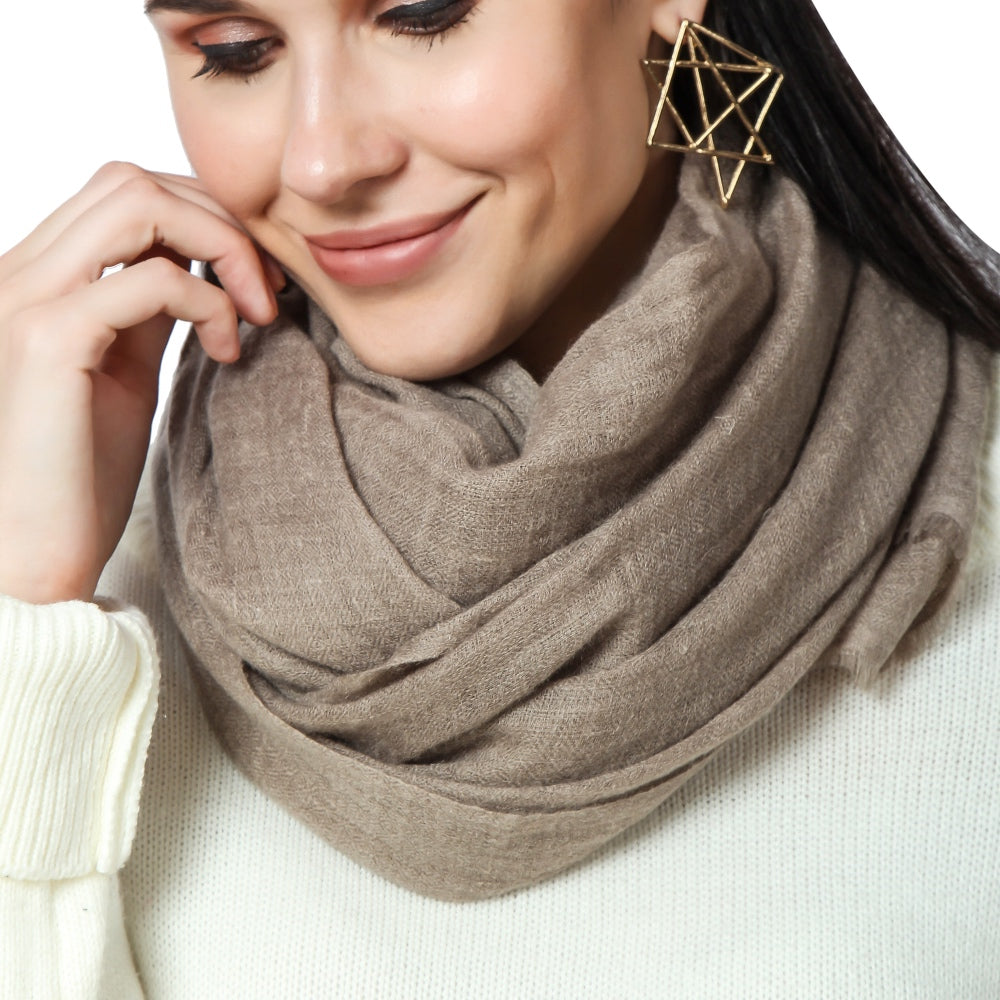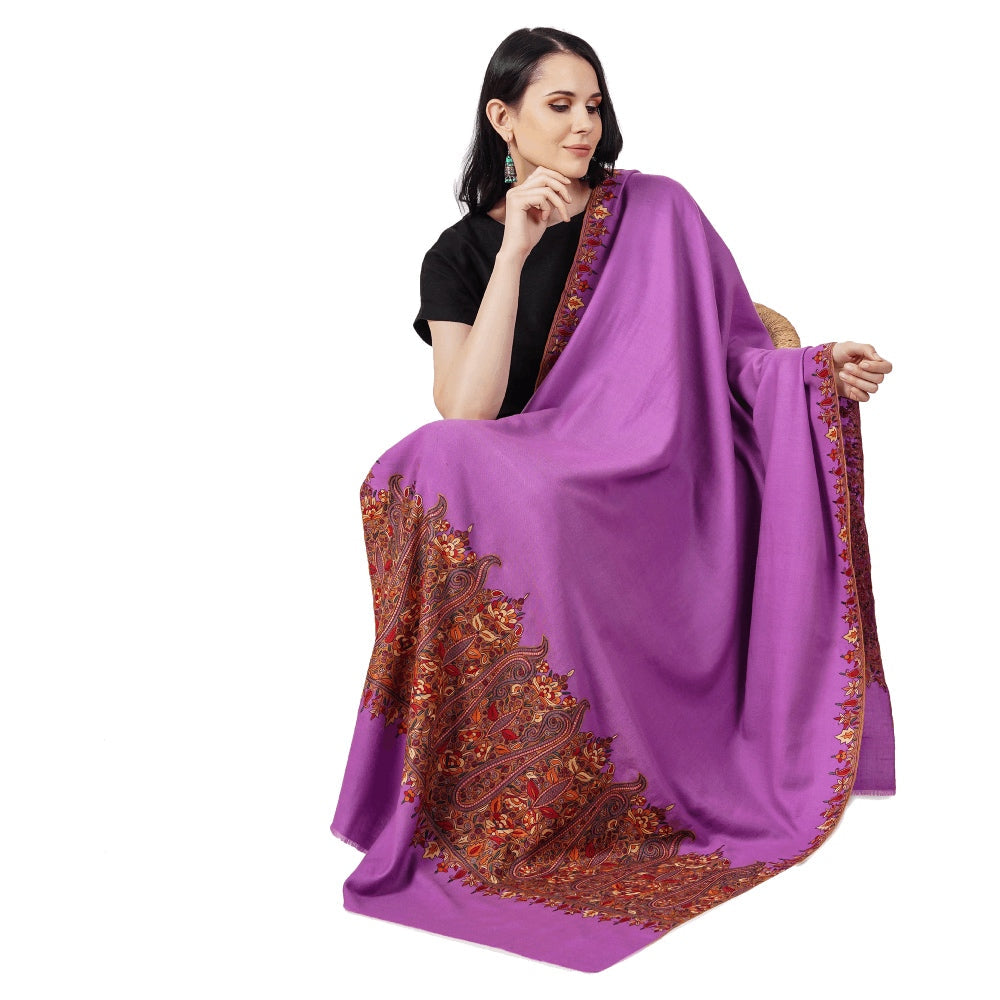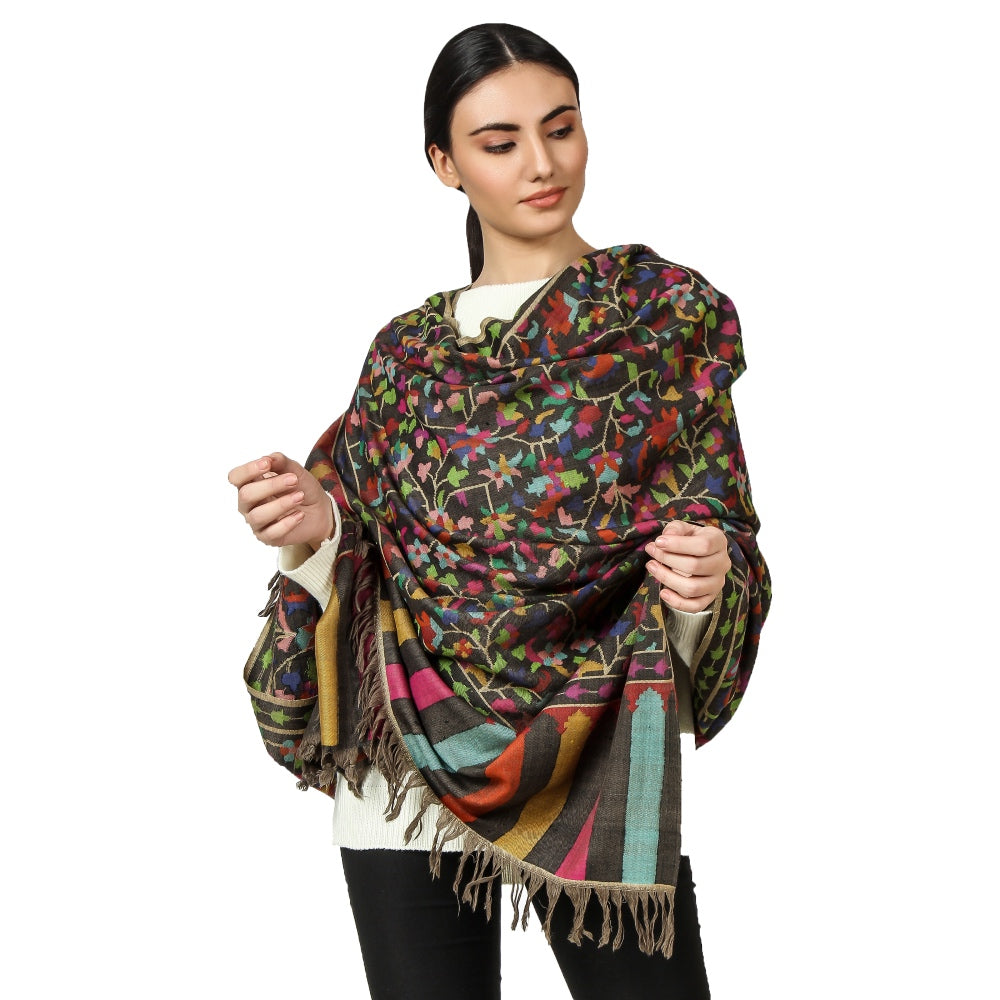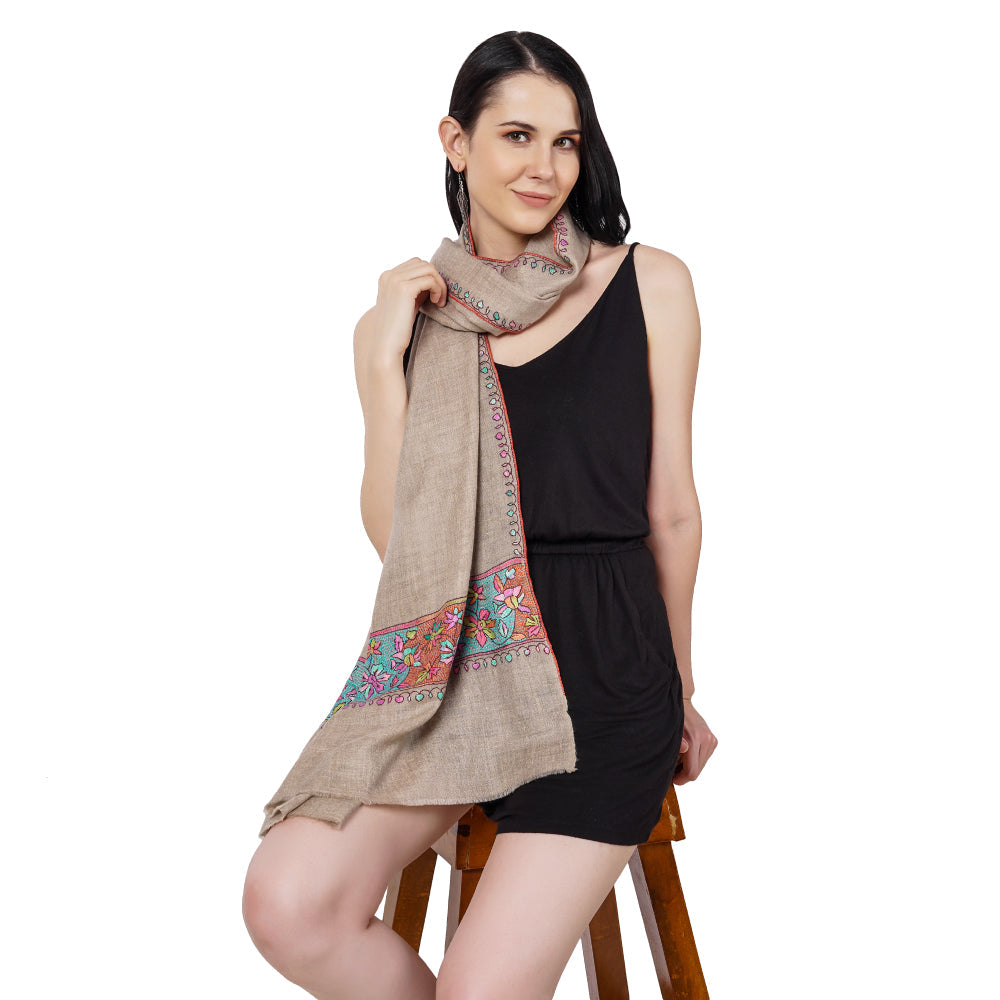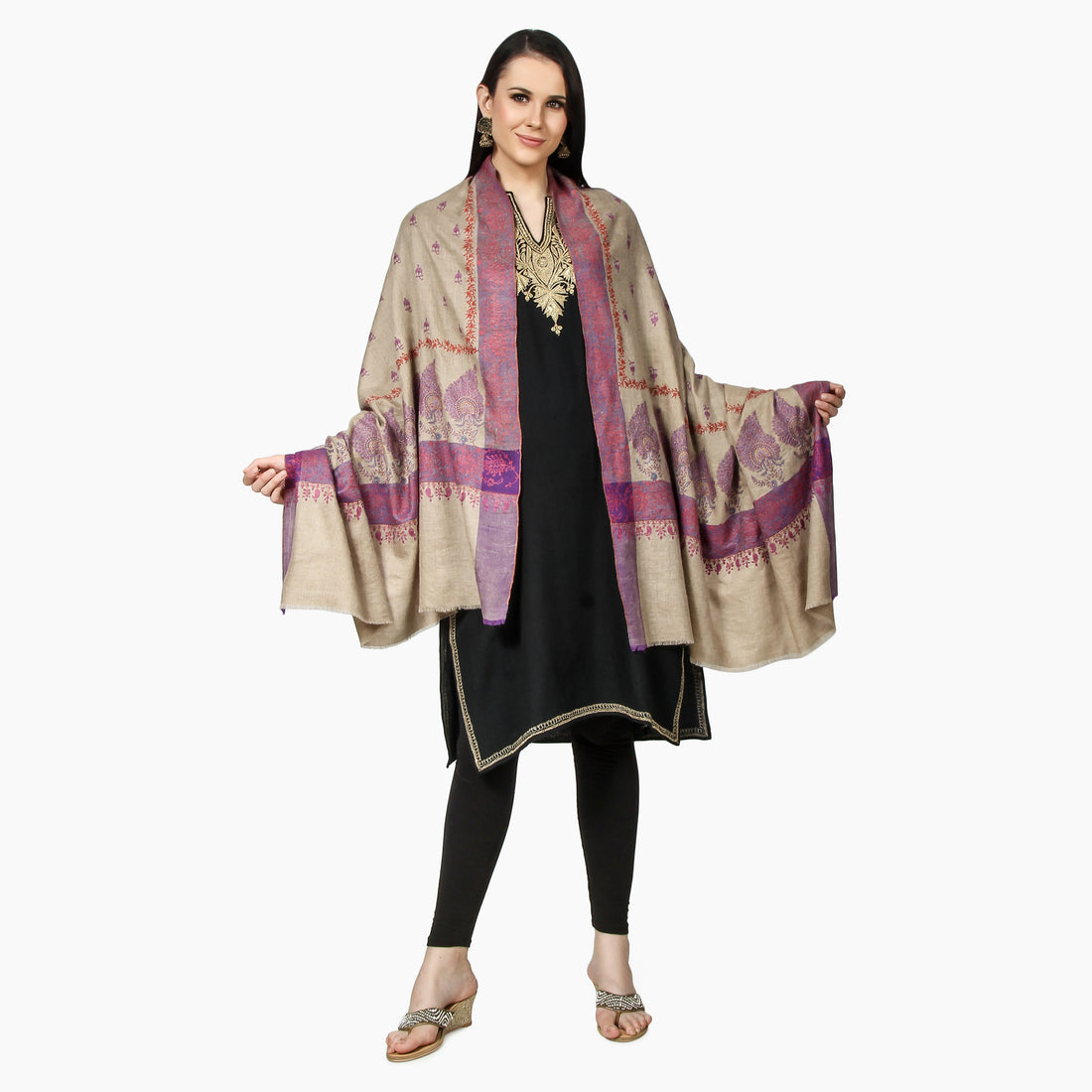
What is the Price of Real Pashmina Shawl?
Share
Introduction
Pashmina shawls, renowned for their exquisite softness and luxurious warmth, have been cherished for centuries. These shawls are often associated with the highest levels of quality and craftsmanship, but their price can vary significantly. In this blog, we will delve into the world of real Pashmina shawls, exploring their unique characteristics and the factors that influence their price.
Understanding Pashmina and Cashmere
What is Pashmina?
Pashmina, also known as Pashm or Pashm wool, is derived from the fine undercoat of a specific breed of goat, the Changthangi or Pashmina goat, primarily found in the Himalayan region. This wool is exceptionally soft, warm, and lightweight, making it ideal for creating shawls, scarves, and other luxury items. Pashmina is a type of cashmere wool, known for its unrivaled quality.

Cashmere vs. Pashmina
Cashmere refers to any wool that is obtained from certain types of goats, with Pashmina being a subset of cashmere. Pashmina is obtained specifically from the Pashmina goat and is highly prized due to its superior softness and warmth. True Pashmina is considered the pinnacle of cashmere, making it one of the most sought-after fibers for making shawls and other garments.
Factors Influencing the Price
Authenticity and Purity
The price of a real Pashmina shawl is greatly influenced by its authenticity and purity. To be considered genuine, a Pashmina shawl must be made from 100% Pashmina wool, without any blending with other fibers. Authentic Pashmina shawls are often labeled as "100% Pashmina" or "pure Pashmina." The greater the purity, the higher the price.
Craftsmanship and Weaving
The art of weaving Pashmina shawls is an intricate and time-consuming process. The finest Pashmina shawls are handwoven by skilled artisans who meticulously work on traditional wooden looms. The quality of craftsmanship, intricacy of the design, and the time invested in weaving significantly affect the price. Handwoven Pashmina shawls are generally more expensive than machine-made ones.

Density and Weight
The weight and density of a Pashmina shawl are important factors in determining its price. A high-quality Pashmina shawl is often lighter in weight but provides exceptional warmth. The density of the weave can also affect the drape and warmth of the shawl. Thicker and more densely woven shawls are usually more expensive.
Origin and Source
The geographical origin of Pashmina wool plays a crucial role in its price. The finest Pashmina wool is obtained from goats living in the Himalayan region, particularly in Kashmir, Nepal, and Tibet. The climatic conditions and altitude in these areas contribute to the superior quality of the wool. Pashmina from these regions is highly prized and, therefore, commands a higher price.
Natural Dyeing
The use of natural dyes in the coloring of Pashmina shawls is another factor that can affect their price. Natural dyes, derived from plants and minerals, are not only eco-friendly but also give a unique and vibrant color palette to the shawls. The process of natural dyeing is labor-intensive, which can contribute to the higher cost of these shawls.
Brand and Reputation
The reputation of the brand or artisan behind the Pashmina shawl can significantly impact its price. Well-established brands and renowned artisans are known for their quality and craftsmanship, which can justify a premium price. Additionally, the history and heritage associated with certain brands can contribute to the higher cost of their Pashmina products.
Price Ranges of Real Pashmina Shawls
also read:- a detailed blog on Weaving a Pashmina Shawl: Understanding the Time and Expertise Required for High-Quality Craftsmanship
Entry-Level Pashmina Shawls
Entry-level Pashmina shawls are typically machine-made and may contain a blend of Pashmina and other fibers. These shawls are more affordable and can be found in the range of $50 to $150. While they offer the luxurious feel of Pashmina, they may not match the quality and warmth of purer, handwoven shawls.
Mid-Range Pashmina Shawls
Mid-range Pashmina shawls are often handwoven with a higher percentage of Pashmina wool. They exhibit better craftsmanship and may feature intricate designs. Prices for mid-range shawls typically range from $200 to $500. These shawls strike a balance between quality and affordability.
High-End Pashmina Shawls
High-end Pashmina shawls are the epitome of luxury and craftsmanship. These shawls are handwoven from 100% pure Pashmina wool, often in traditional designs. They can cost anywhere from $600 to several thousand dollars, depending on factors like weaving intricacy, rarity, and the reputation of the brand.
Collectible and Rare Pashmina Shawls
Collectible and rare Pashmina shawls are a class apart. These shawls are crafted by master artisans, often featuring unique designs and rare natural dyes. Prices for such shawls can vary greatly, with some reaching tens of thousands of dollars. They are considered both works of art and symbols of luxury.
Conclusion
The price of a real Pashmina shawl varies significantly based on factors such as authenticity, craftsmanship, origin, weaving technique, and brand reputation. Understanding these factors is essential for consumers seeking the perfect Pashmina shawl that suits their budget and preferences. Whether you opt for an entry-level shawl or invest in a high-end masterpiece, the unparalleled softness and warmth of real Pashmina are sure to make it a cherished addition to your wardrobe.
In the world of luxury textiles, Pashmina remains an enduring symbol of elegance and comfort. Its price reflects not only the material's intrinsic quality but also the skill and dedication of the artisans who bring these shawls to life. So, when you invest in a real Pashmina shawl, you are not just purchasing a garment; you are acquiring a piece of timeless artistry and tradition

